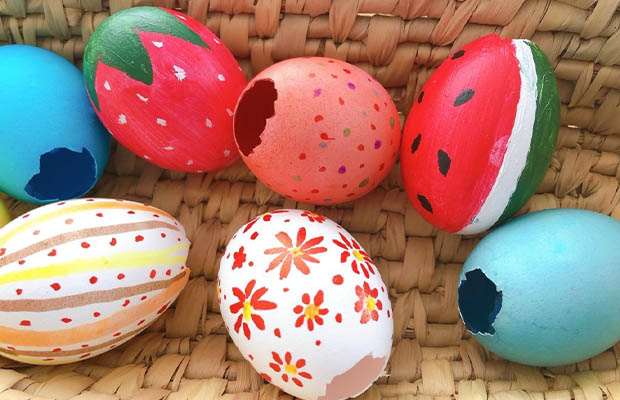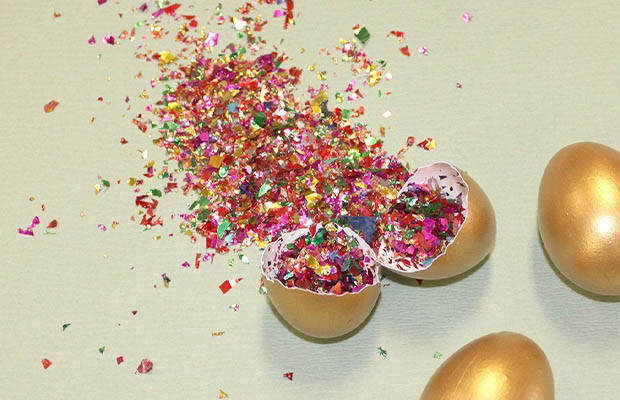Nothing is more enjoyable than cracking an egg full of confetti over someone’s head! Today I’m going to share a fantastic little tutorial on how to make Confetti Eggs.
You can make confetti eggs out of paper confetti, glitter confetti, or biodegradable confetti. Parties, Easter, Cinco de Mayo, and gender reveal parties all work well with them.
Who doesn’t enjoy a good laugh now and then, and who doesn’t love colorful confetti?
Table of Contents
Instructions
- 1. Tap a small hole at the egg’s small end using the spoon’s end.
- 2. Remove the egg’s contents by giving it a gentle shake. (The yolk may need to be broken.)
- 3. Follow the instructions on how to dye eggs if you’re using an egg dyeing kit. If you want to use food coloring, combine vinegar and water in a cup 1 to 1 with 10 to 20 drops of food coloring.
- 4. Insert the hollowed-out egg into the cup. The color of the eggs will darken the longer they are left in the water or vinegar. (Mine was in for a considerable amount of time.)
- 5. Let the eggs dry. (I dyed eggs using a kit and food coloring. The kit included additional shimmery paint that really brought out the colors in the eggs.)
- 6. Place confetti into eggs with care.
- 7. Around the egg’s edge, apply some glue. To spread glue, use a brush or your finger.
- 8. The tissue square should be placed over the egg’s opening. To make sure all of the tissue’s edges are adhered, gently tap them into the glue.
- 9. Finish by allowing to dry!
What Are Cascarones Used For?
Cascarones are colorfully decorated chicken eggshells filled with confetti. Families typically paint the eggs instead of using food dye to color them.

To learn more about this custom, watch my entire YouTube video HERE.
The name cascarón (singular) comes from the Spanish word “cáscara” which means skin, peel, or shell.
Cracking cascarones on the heads of friends and family members is a tradition associated with Easter in the Southwest region of the United States. Many claim that throwing confetti will bring good fortune, but those who are affected by it might disagree.
What is the History of Cascarones?
The cascarón has its origins in Asia, where scented powder-filled eggs were traditionally given as gifts to wealthy women. According to legend, Marco Polo played a part in the tradition’s subsequent spread throughout Europe.
When Maximilian and Charlotte (also known as “Carlota”) arrived in Mexico in 1864, they popularized cascarones by substituting confetti for the perfumed powder.
Today, Mexicans continue to use cascarones to commemorate special occasions like Carnaval (the carnival that precedes Lent), Dia de los Muertos, Cinco de Mayo, and—most frequently—Easter.
Texas is close to Mexico, so this Mexican custom quickly spread to border towns in the U.S. and other parts of the Southwest. (My family purchased it there!)
During Fiesta San Antonio, which is typically held in March or April, cascarones are a mainstay. They add festive flair to any holiday event.
Read More: How to Make Orange Garland?
FAQs
What is a Confetti Egg?
A cascarón is a hollowed-out egg that cracks open to a shower of paper confetti, much like a pint-size piñata. They will undoubtedly be popular for Easter whether they are filled with confetti, trinkets, or small toys.
Are Confetti Eggs Real Eggs?
Made with real egg shells painted in bright colors and filled with multicolored paper confetti. Confetti eggs are entirely biodegradable.
